Email sales@AllianceChemical.com for 24/7 Expert Support
-
512-365-6838
-
Hydrofluorosilicic Acid 23% ACS
Category : Acids
$23.12
$0.00
Liquid error (snippets/product-blocks line 100): divided by 0
Off
Unit price
/
Shipping Notice: Possible Hazmat Fees
💡 Smart Shipping Tip: Quart & Liter Sizes Often Avoid Hazmat Fees
This size may be classified as hazmat and can incur additional carrier fees. See shipping guide
- ✅ Good news: 1 Quart containers qualify as "Limited Quantity" and bypass hazmat rules
- 💡 Pro tip: Order multiple 1 Quart containers to avoid hazmat fees entirely
- 💰 Hazmat fees can get expensive - especially for larger containers (carrier charges, not our markup)
- 🚚 Ground shipping only - no expedited options for sizes over 1 Qt/1L
Required by 49 CFR § 173.150 for chemical containers larger than 1 quart. Actual fees shown at checkout. View our complete shipping guide →
✅ Great Choice! No Hazmat Fees
1 Quart containers qualify as "Limited Quantity" and avoid hazmat shipping fees.
- 🚀 Faster shipping: Eligible for expedited shipping options including air transport
- 💰 No hazmat fees: Ships as "Limited Quantity" per DOT regulations
- 📦 Convenient size: Perfect for testing or smaller applications
- ♻️ Smart choice: Order multiple quarts to get the volume you need without hazmat charges
Exempted under 49 CFR § 173.150 Limited Quantity provisions for containers ≤1 liter/quart. Learn more in our shipping guide →
Quantity
Size:
Variation:
-
$23.12Delivery every$21.96
-
$31.52Delivery every$29.94
-
$44.32Delivery every$42.10
-
$65.04Delivery every$61.79
-
$48.36Delivery every$45.94
-
$76.22Delivery every$72.41
-
$125.28Delivery every$119.02
-
$3,808.08Delivery every$3,617.68
-
$183.57Delivery every$174.39
-
$697.29Delivery every$662.43
-
$5,068.47Delivery every$4,815.05
-
$464.01Delivery every$440.81
-
$1,359.57Delivery every$1,291.59
-
$4,413.60Delivery every$4,192.92
-
$5,141.76Delivery every$4,884.67
-
$5,861.61Delivery every$5,568.53
$23.12
$0.00
Liquid error (snippets/product-sticky-blocks line 69): divided by 0
Off
Unit price
/

Hydrofluorosilicic Acid 23% ACS
$23.12
$0.00
Liquid error (snippets/sticky-product line 56): divided by 0
Off
Unit price
/
Size:
Variation:
-
$23.12Delivery every$21.96
-
$31.52Delivery every$29.94
-
$44.32Delivery every$42.10
-
$65.04Delivery every$61.79
-
$48.36Delivery every$45.94
-
$76.22Delivery every$72.41
-
$125.28Delivery every$119.02
-
$3,808.08Delivery every$3,617.68
-
$183.57Delivery every$174.39
-
$697.29Delivery every$662.43
-
$5,068.47Delivery every$4,815.05
-
$464.01Delivery every$440.81
-
$1,359.57Delivery every$1,291.59
-
$4,413.60Delivery every$4,192.92
-
$5,141.76Delivery every$4,884.67
-
$5,861.61Delivery every$5,568.53
Ask a question
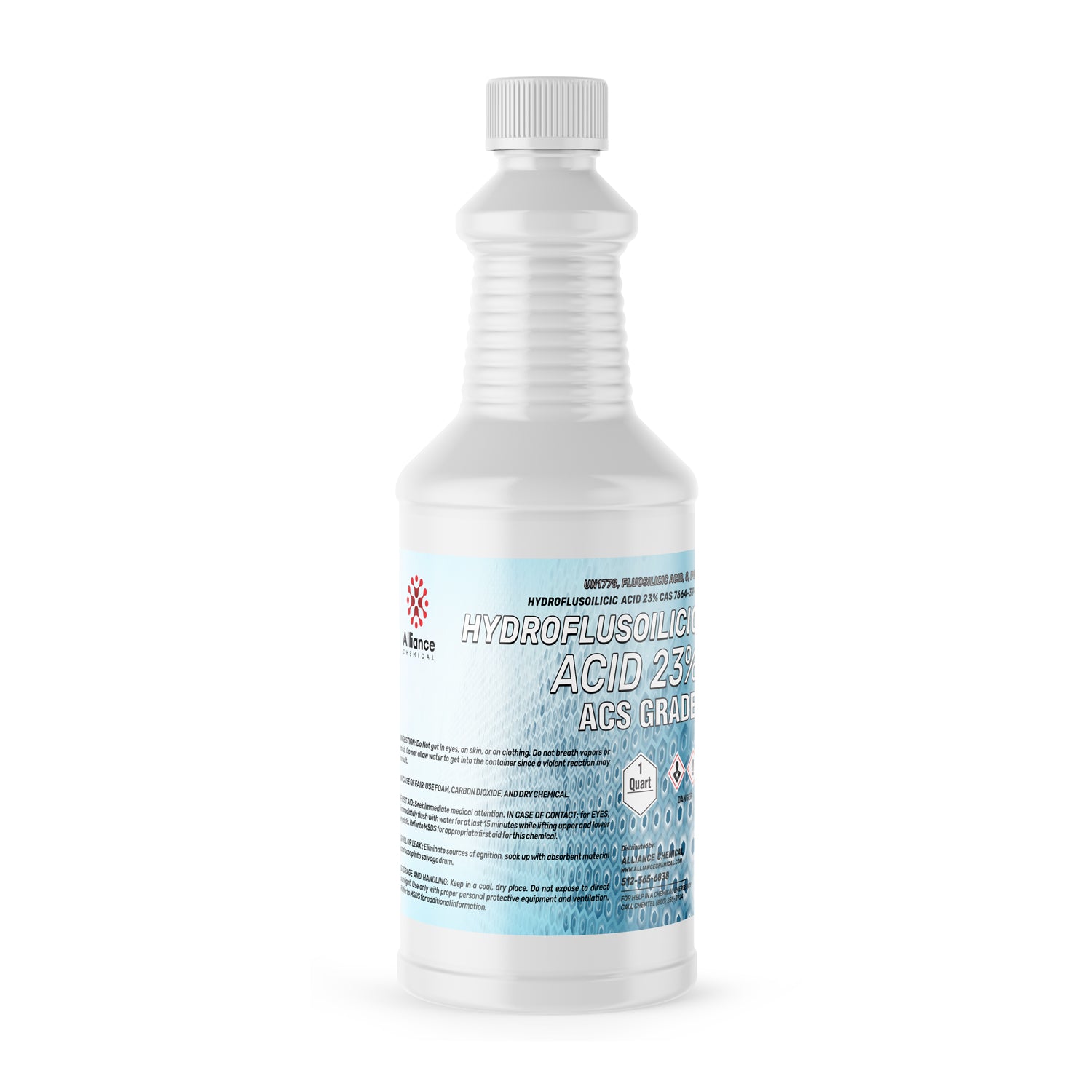
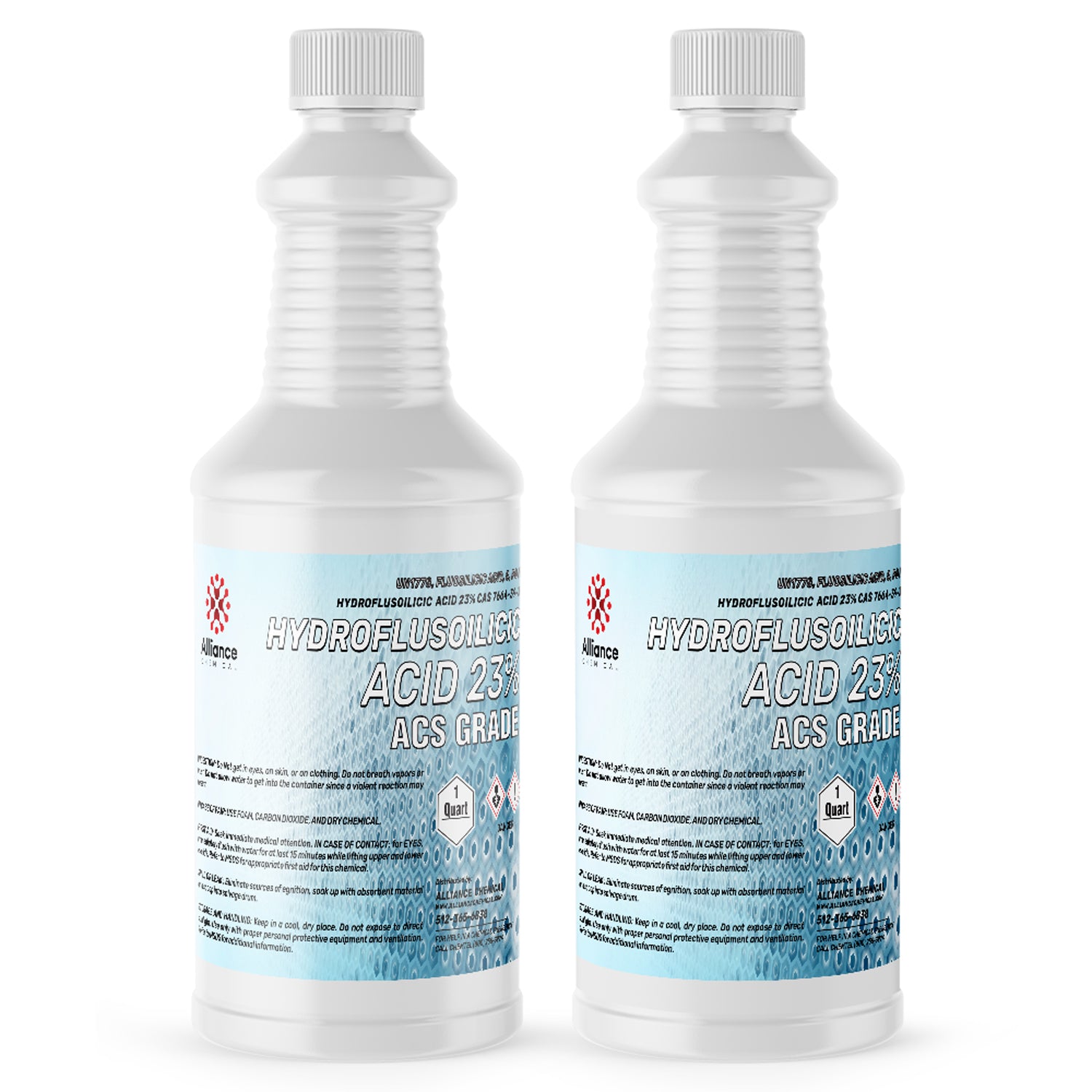
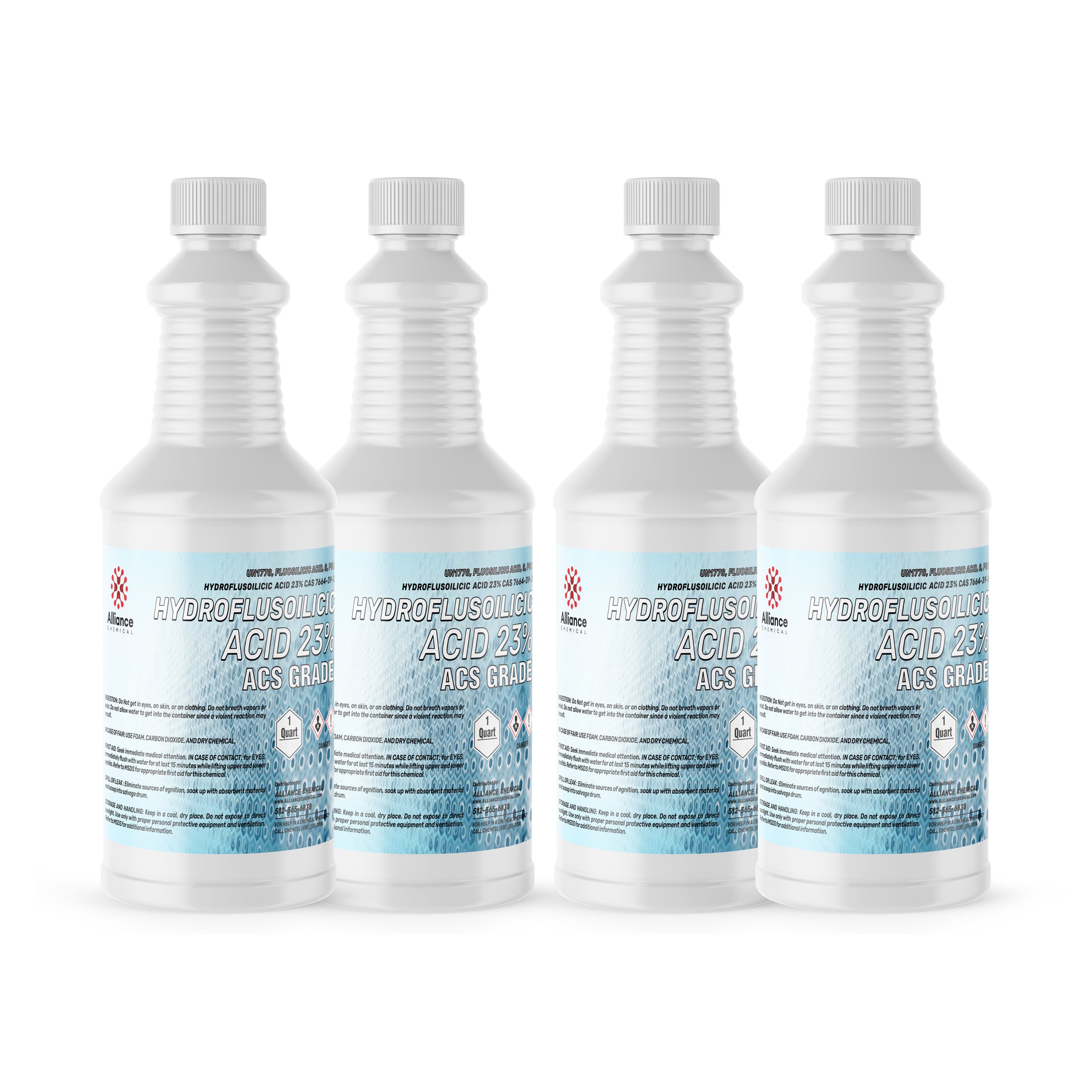
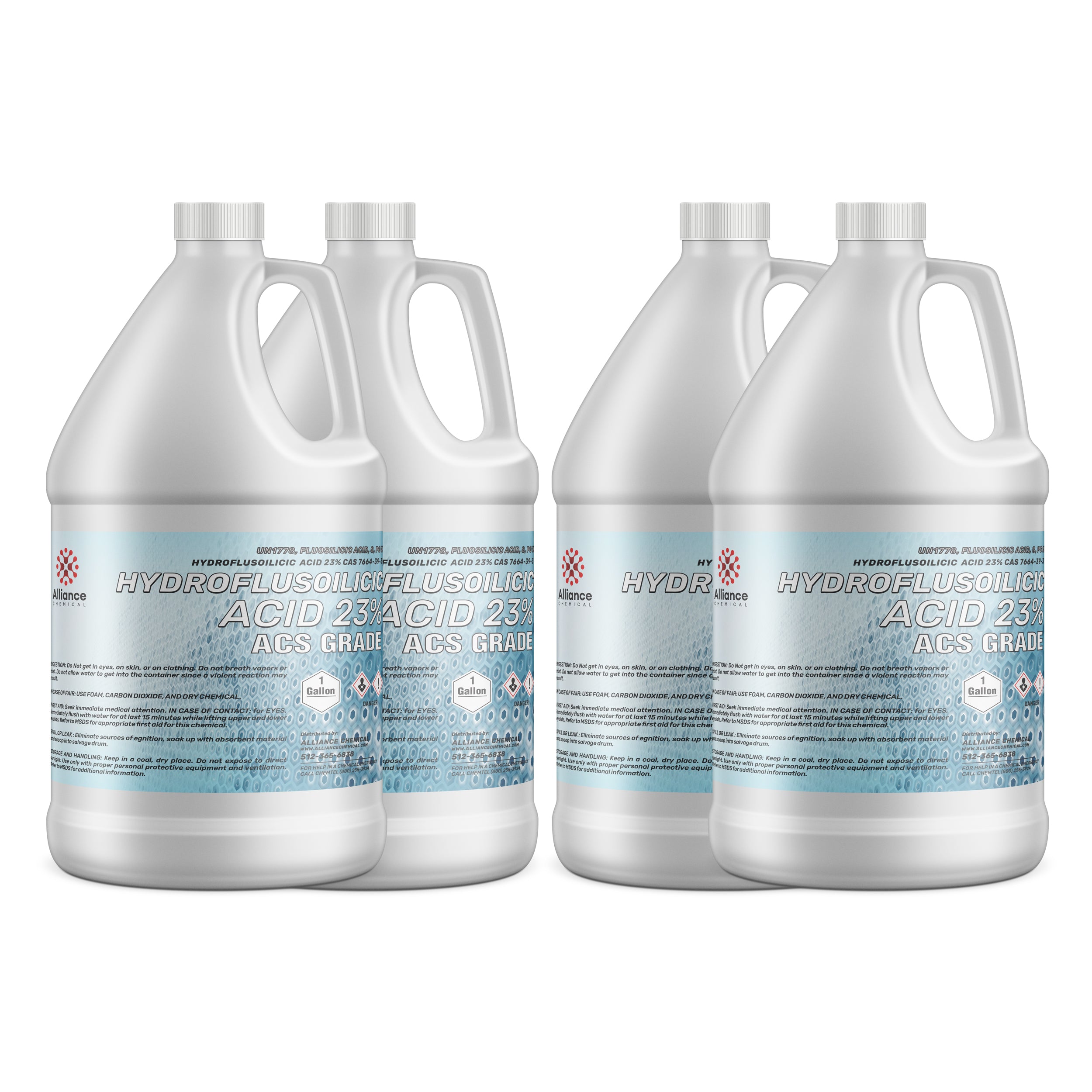
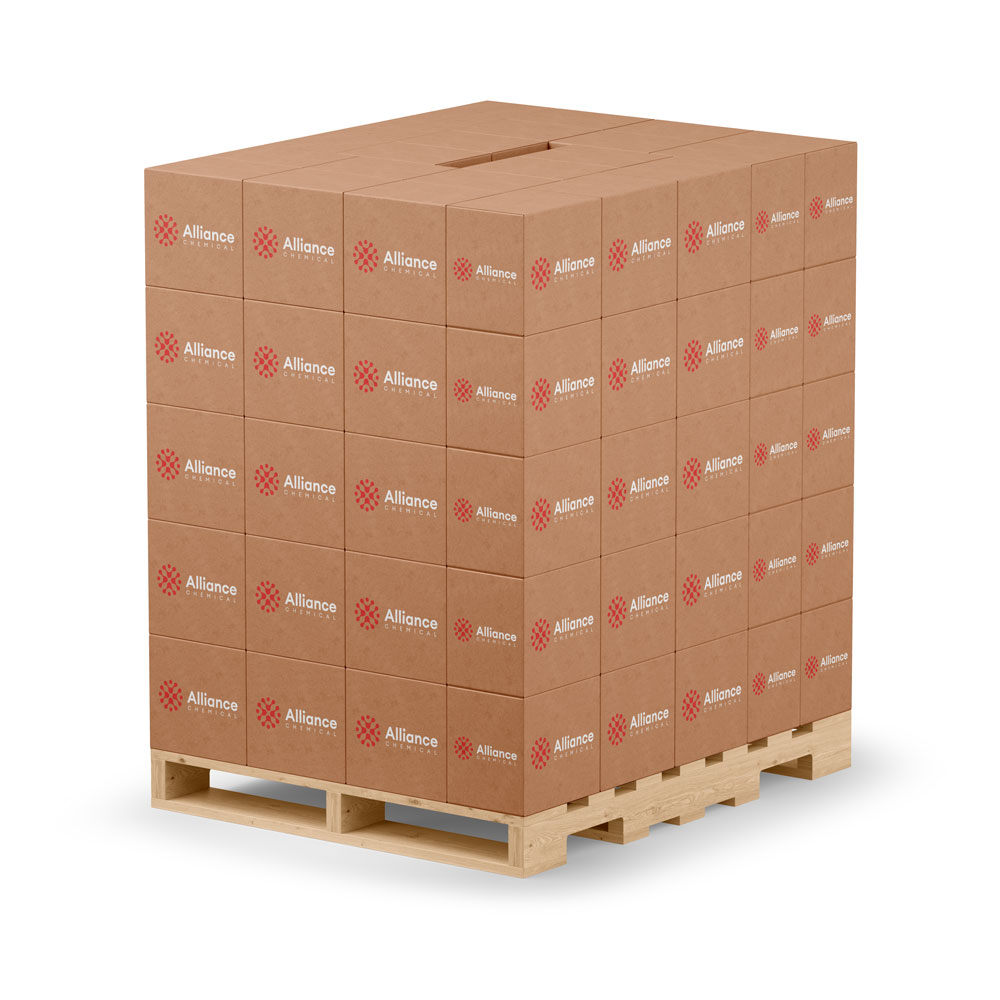
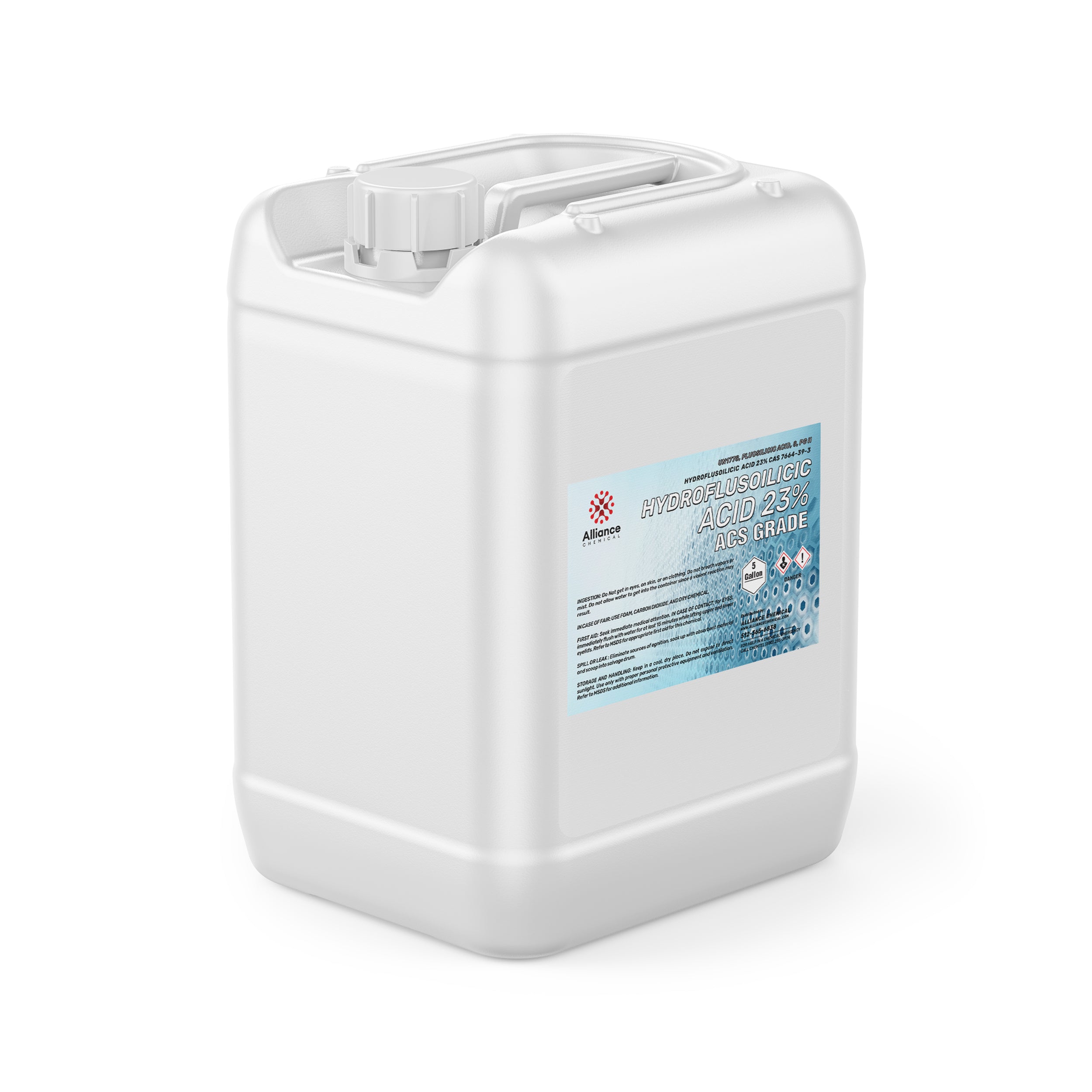
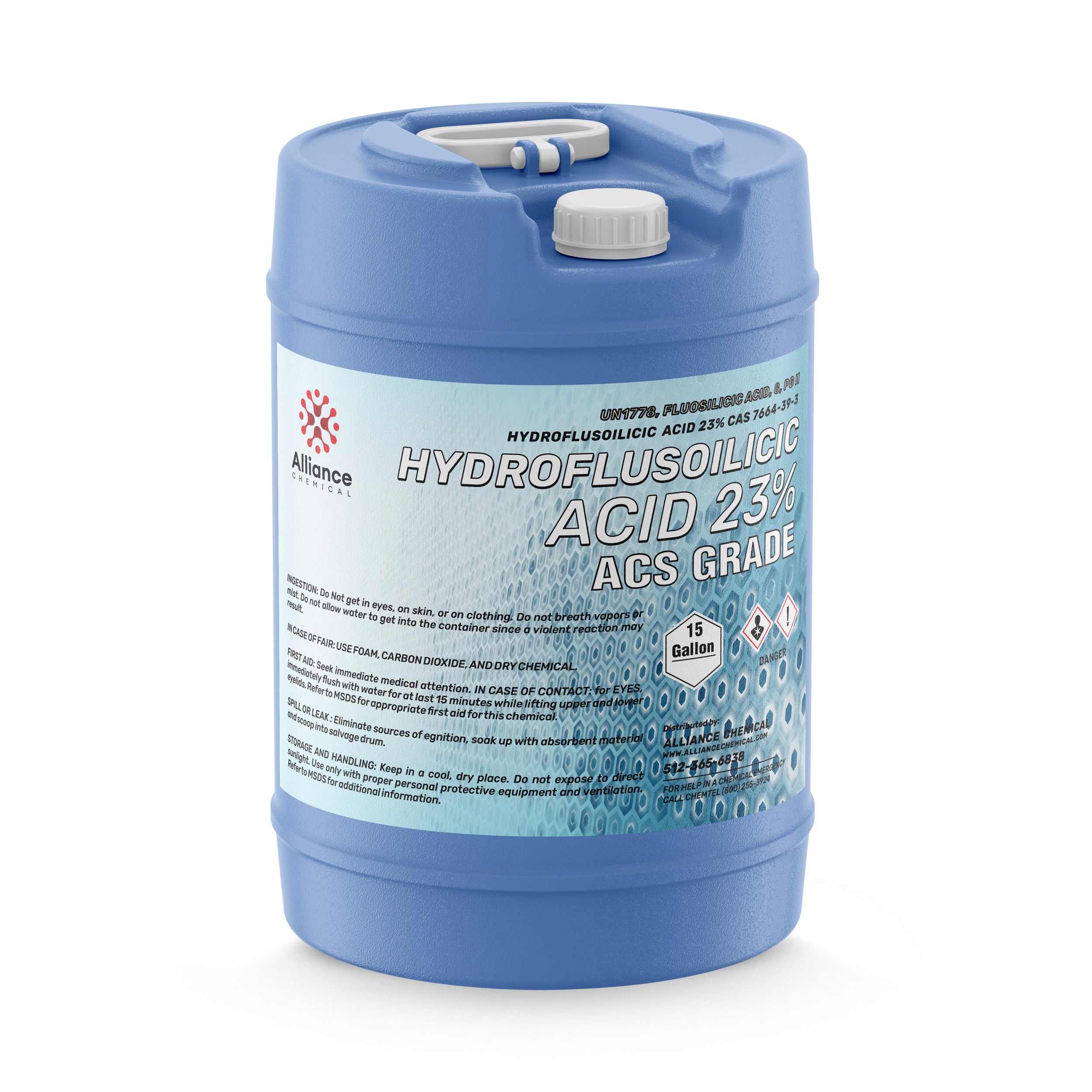
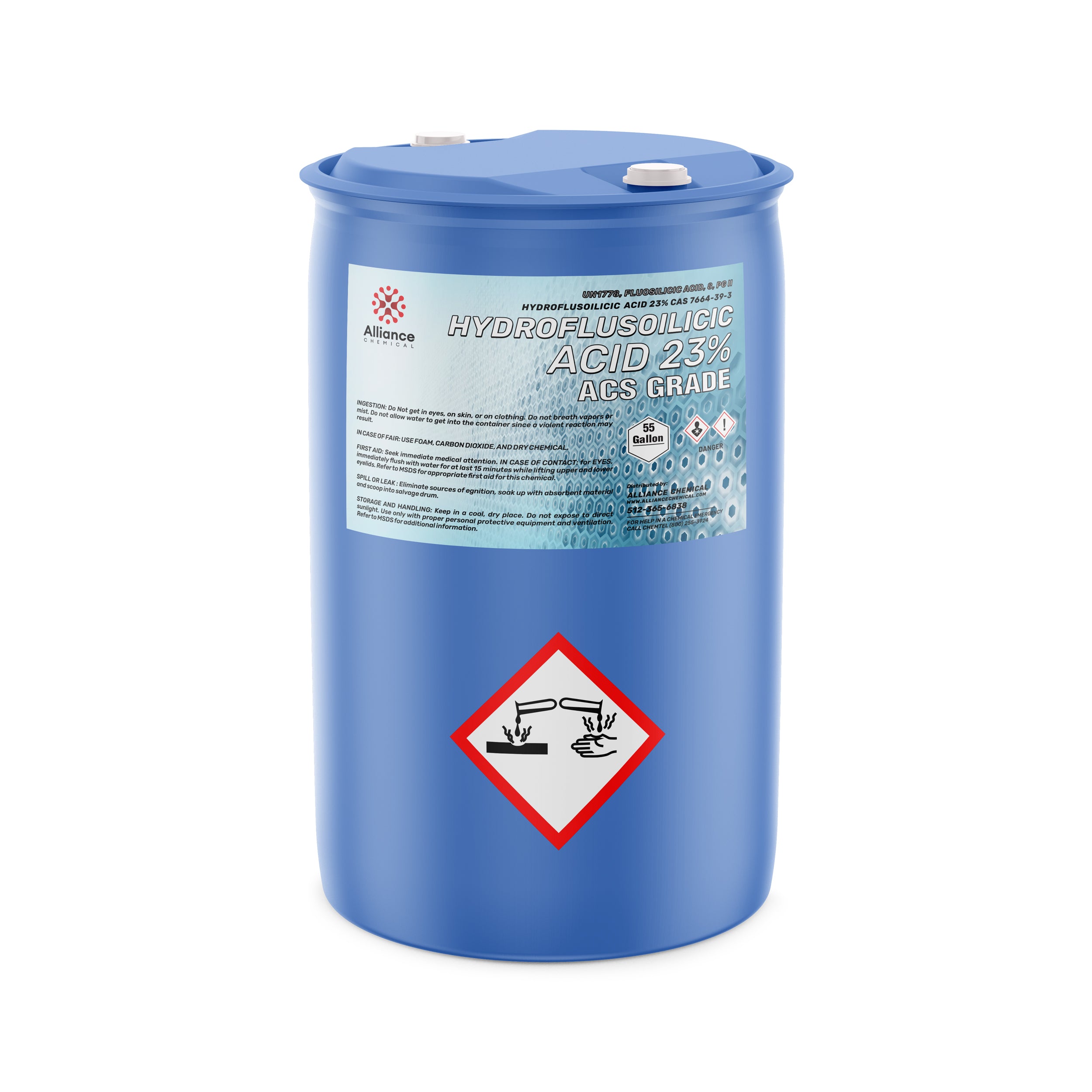


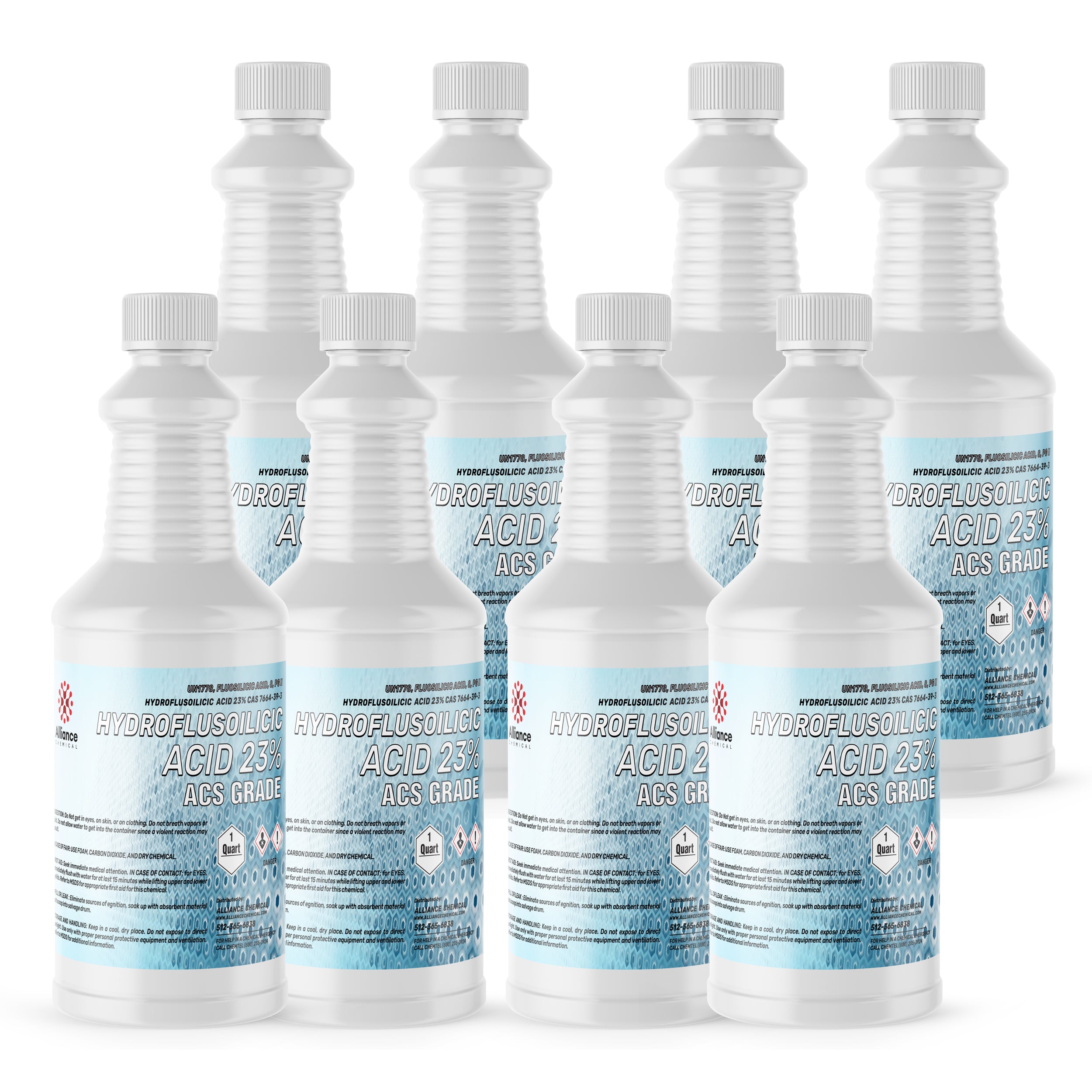
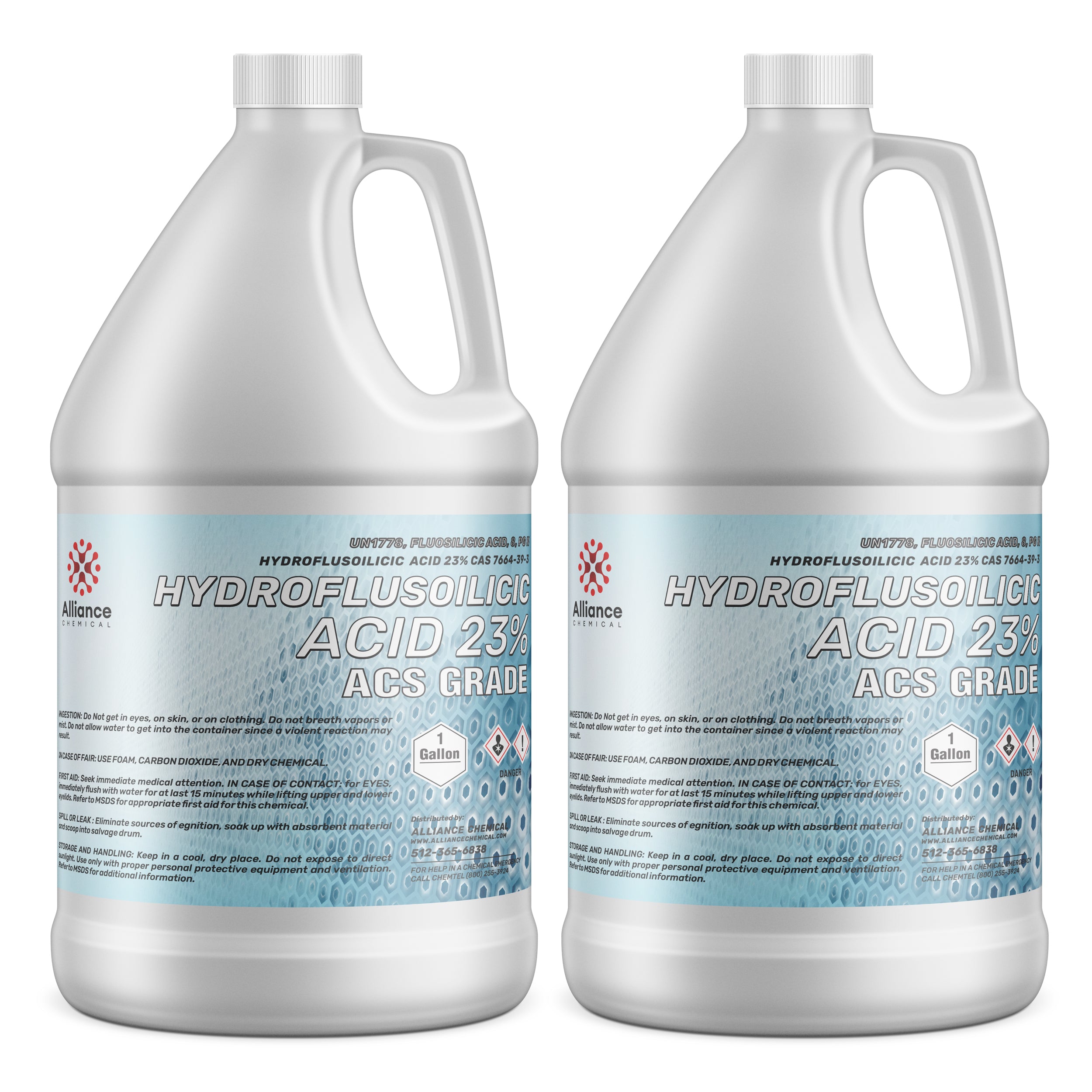
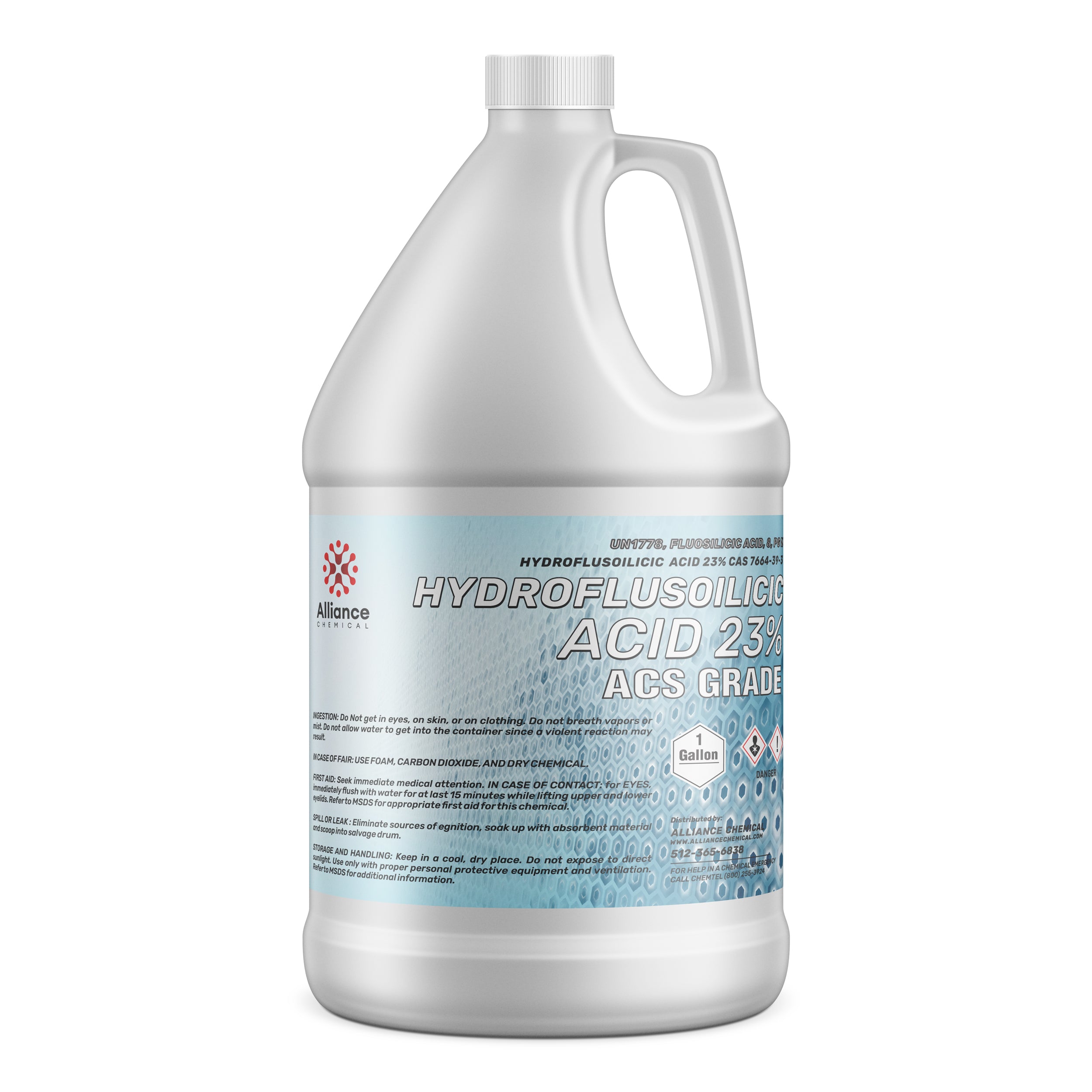
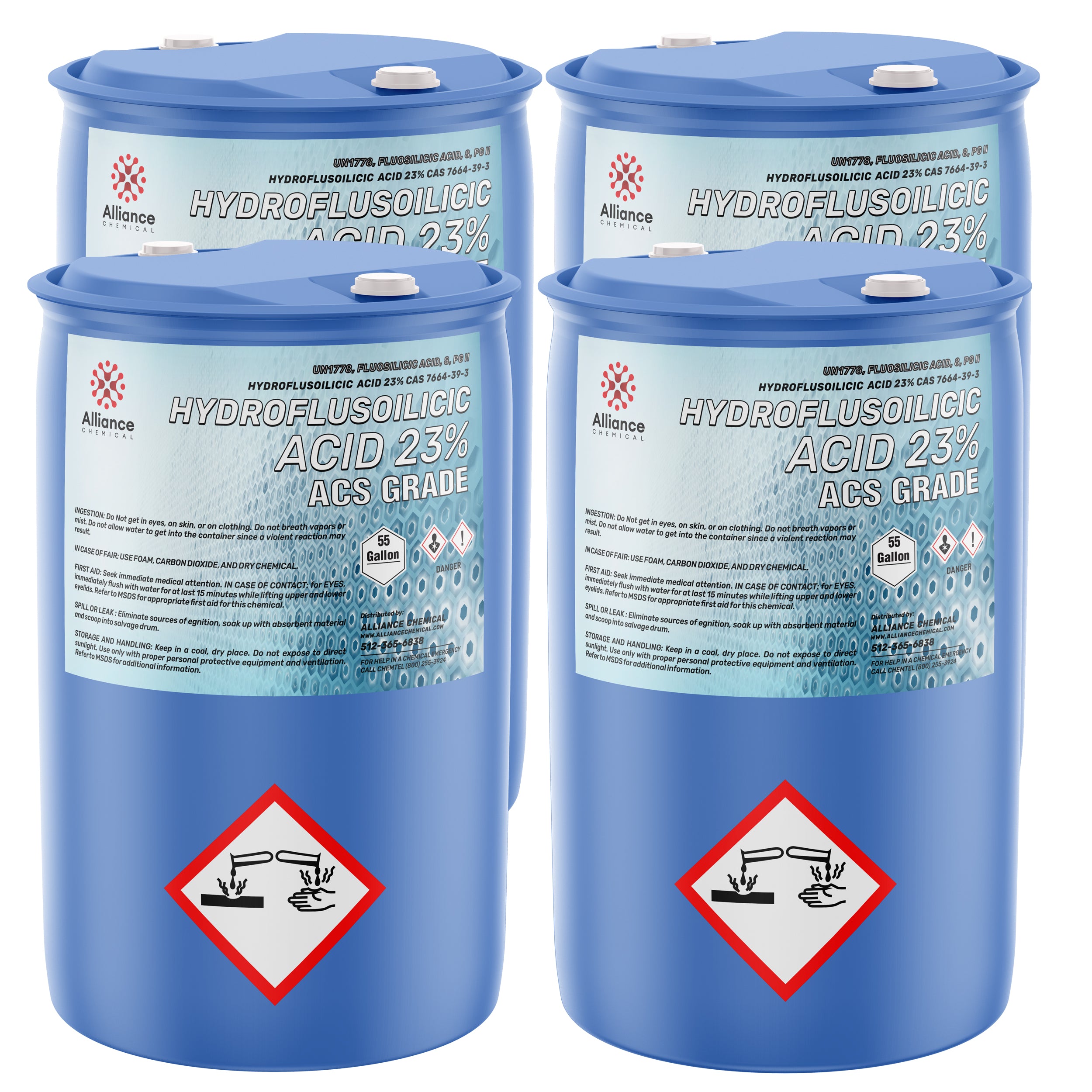
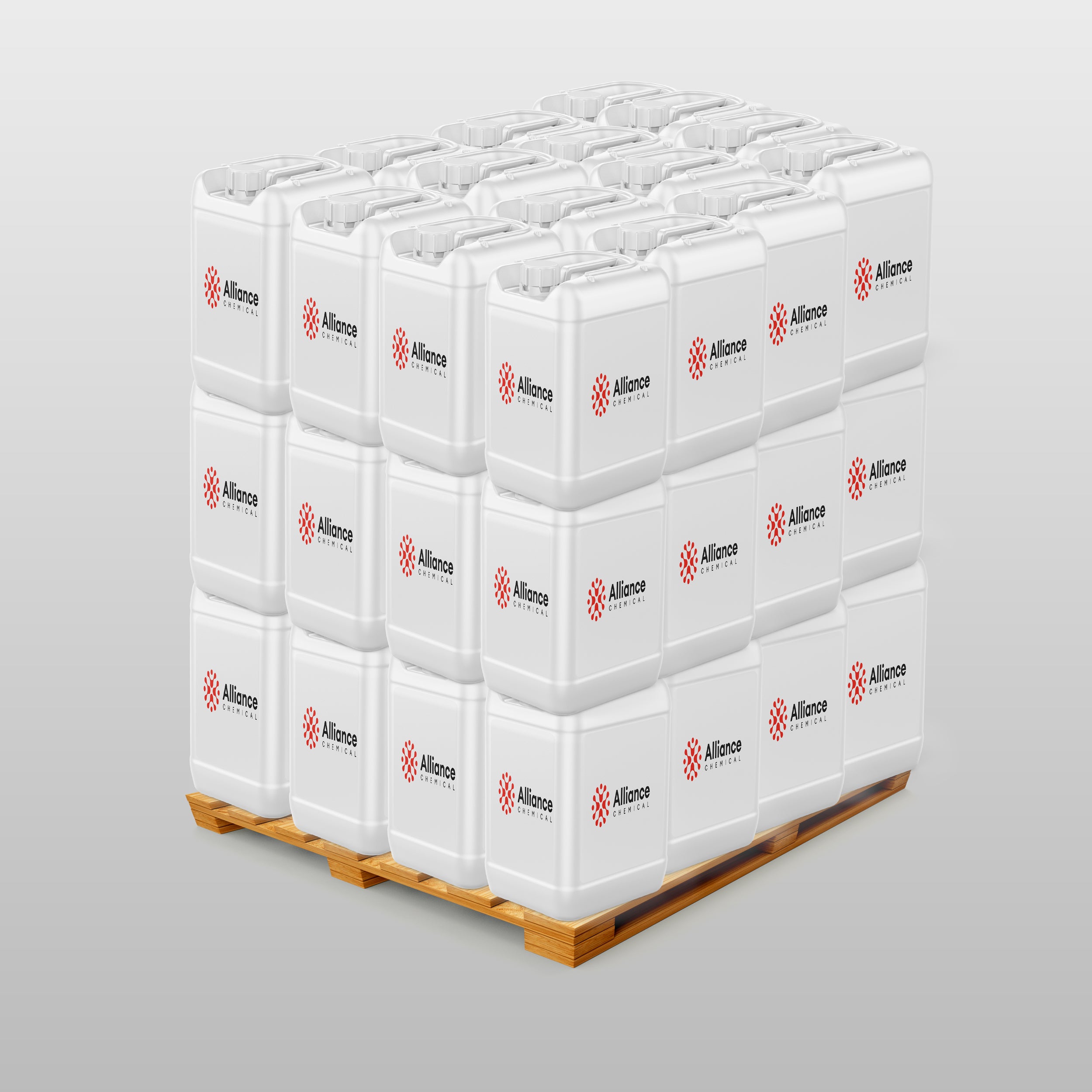
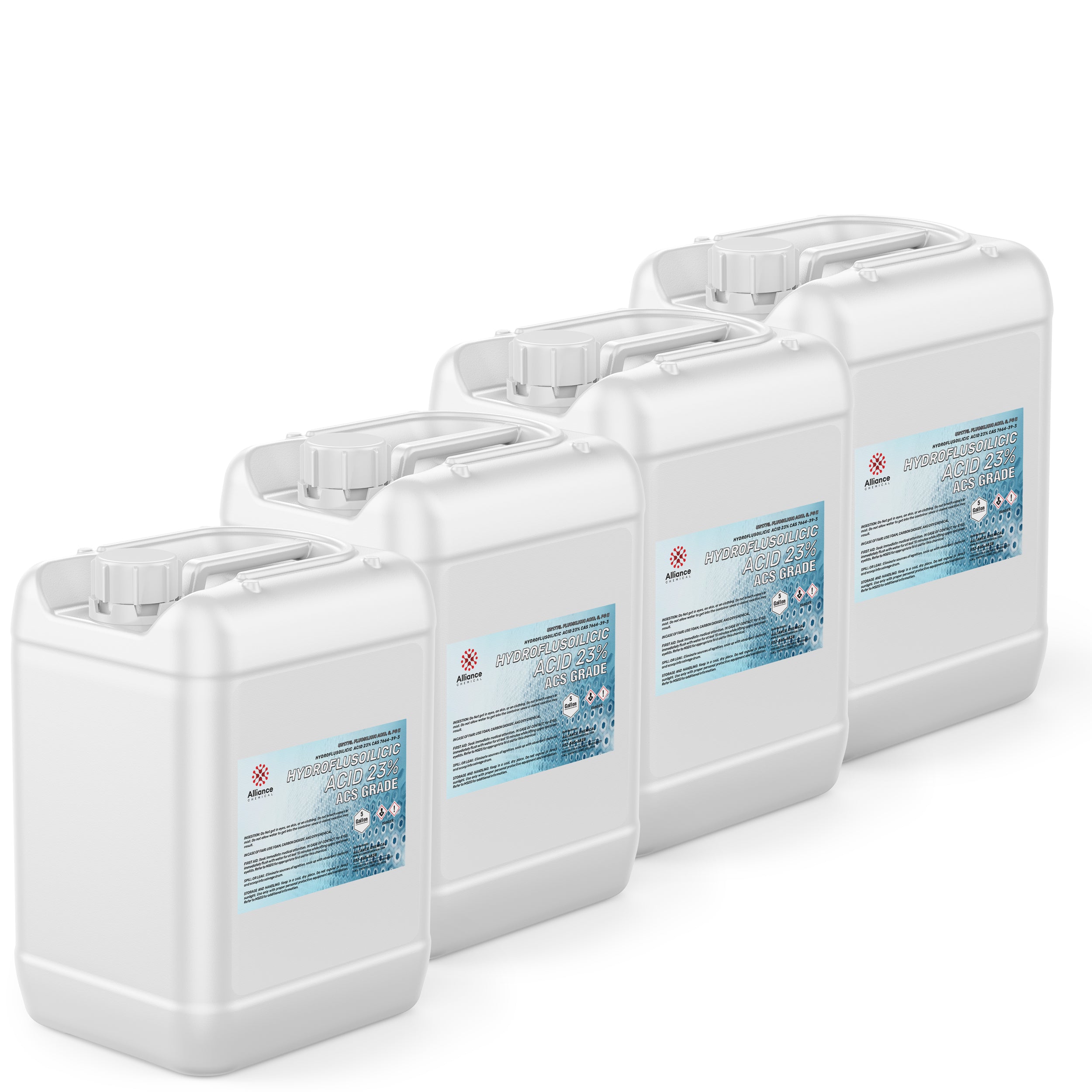

- Description
- Product Documents
Product Overview
Hydrofluorosilicic Acid 23% ACS is a high-purity, colorless liquid solution comprised of Hexafluorosilicic Acid (H₂SiF₆). Manufactured to meet American Chemical Society (ACS) reagent grade standards, this 23% concentration ensures consistent stoichiometry and minimal trace metal impurities. It is extensively used in municipal water treatment for fluoridation, as well as in electrolytic refining and chemical synthesis.
This solution features a density of approximately 1.204 g/mL at 20°C with a typical color specification of APHA 6, indicating exceptional clarity. The production process strictly controls heavy metals and residue after ignition (typical 0.02%), making it suitable for sensitive analytical workflows, pharmaceutical precursors, and specialized metal finishing processes where contamination must be minimized.
Key Specifications
- Chemical Name: Hydrofluorosilicic Acid (Hexafluorosilicic Acid)
- Concentration: 23% w/w (22.5% – 23.5% range)
- Grade: ACS Reagent Grade
- CAS Number: 16961-83-4
- Formula: H₂SiF₆
- Specific Gravity: 1.204 (typical) at 20°C
- Heavy Metals (as Pb): Max 0.1 ppm
- Appearance: Clear, colorless liquid
Common Applications
- Municipal Water Treatment: The primary source for adjusting fluoride levels in drinking water systems due to its solubility and precise dosing capabilities.
- Metal Surface Treatment: Used in electroplating baths and metal cleaning to prepare surfaces and enhance corrosion resistance.
- Chemical Synthesis: Serves as a vital precursor in the production of aluminum fluoride, cryolite, and other organic fluorine compounds.
- Laboratory Reagent: Utilized in analytical chemistry for separations and as a titration agent requiring high-purity inputs.
- Ceramics & Glass: Employed in the hardening of ceramics and etching processes.
Safety & Handling
Hydrofluorosilicic Acid is a corrosive liquid (Class 8) and requires strict adherence to safety protocols. Personnel must wear acid-resistant personal protective equipment (PPE), including gloves, goggles, and face shields. Store in HDPE or lined steel containers in a cool, well-ventilated area, away from strong bases and glass (unless specifically designed for fluorides).
Shipping Information: UN 1760, Corrosive liquid, n.o.s. (Hydrofluorosilicic Acid), Class 8, PG II.
Related Products
| Property | Value |
|---|---|
| Molecular Weight | 144.08 g/mol |
| Formula | H2SiF6 |
| Assay | 23% |
| Grade | ACS |
| Form | Liquid |
| Solubility | Miscible with water |
| Appearance | Clear, colorless liquid |
| Melting Point | -37 °C |
| Boiling Point | 108 °C |
| Specific Gravity | 1.12 |
| Industry | Industrial, Environmental, Wastewater |
Other top rated products

















HC6-6N8-T3C
$23.12
$0.00
Liquid error (snippets/product-blocks line 100): divided by 0
Off
Unit price
/
Shipping Notice: Possible Hazmat Fees
💡 Smart Shipping Tip: Quart & Liter Sizes Often Avoid Hazmat Fees
This size may be classified as hazmat and can incur additional carrier fees. See shipping guide
- ✅ Good news: 1 Quart containers qualify as "Limited Quantity" and bypass hazmat rules
- 💡 Pro tip: Order multiple 1 Quart containers to avoid hazmat fees entirely
- 💰 Hazmat fees can get expensive - especially for larger containers (carrier charges, not our markup)
- 🚚 Ground shipping only - no expedited options for sizes over 1 Qt/1L
Required by 49 CFR § 173.150 for chemical containers larger than 1 quart. Actual fees shown at checkout. View our complete shipping guide →
✅ Great Choice! No Hazmat Fees
1 Quart containers qualify as "Limited Quantity" and avoid hazmat shipping fees.
- 🚀 Faster shipping: Eligible for expedited shipping options including air transport
- 💰 No hazmat fees: Ships as "Limited Quantity" per DOT regulations
- 📦 Convenient size: Perfect for testing or smaller applications
- ♻️ Smart choice: Order multiple quarts to get the volume you need without hazmat charges
Exempted under 49 CFR § 173.150 Limited Quantity provisions for containers ≤1 liter/quart. Learn more in our shipping guide →
Size:
Variation:
-
$23.12Delivery every$21.96
-
$31.52Delivery every$29.94
-
$44.32Delivery every$42.10
-
$65.04Delivery every$61.79
-
$48.36Delivery every$45.94
-
$76.22Delivery every$72.41
-
$125.28Delivery every$119.02
-
$3,808.08Delivery every$3,617.68
-
$183.57Delivery every$174.39
-
$697.29Delivery every$662.43
-
$5,068.47Delivery every$4,815.05
-
$464.01Delivery every$440.81
-
$1,359.57Delivery every$1,291.59
-
$4,413.60Delivery every$4,192.92
-
$5,141.76Delivery every$4,884.67
-
$5,861.61Delivery every$5,568.53
Compare Products
| Price |
|---|
| SKU |
| Rating |
| Discount |
| Vendor |
| Tags |
| Weight |
| Stock |
| Short Description |
